|
Our first camping trip of 2023 was during July, three weeks after
we’sd recovered the Moving House from its six and a half month
stay at Leo’s RV. We were in no hurry because Gail was recovering
from hip surgery. We chose the Delaware coast because it was
an easy 106 miles from home. We had
camped in this area
ten years earlier in early April.
It wasn’t as easy to get there as we expected because we had
intermitent heavy downpours during the entire trip. Fortunately, there
was a gap in the rain when we arrived at the campground and we were
able to set up without being drenched.
The next morning, we noticed that our neighbor had NASA stickers on his
truck. It turns out that he worked at Goddard on the servicing missions.
We both knew Joe Rothenburg and Dave Leckrone on the Project and Matt
Mountain at the ’Tute. Small world!
We sometimes make some blunder on our first camping trip of the year.
Ten years ago, when coming here, I forgot my wallet and drove
the distance without a driver’s license. Good thing I was not stopped.
In 2018 at a different park, I forgot to put down the trailer’s landing gear before
pulling it off the hitch. That damaged the truck, but, luckily, no one was hurt.
This time, nothing so drastic occurred.
We remembered to bring the coffee, but it was in the form of
whole beans, not the ground form needed in our coffee maker.
Our first destination the next morning
was a WaWa for our daily energy.
|
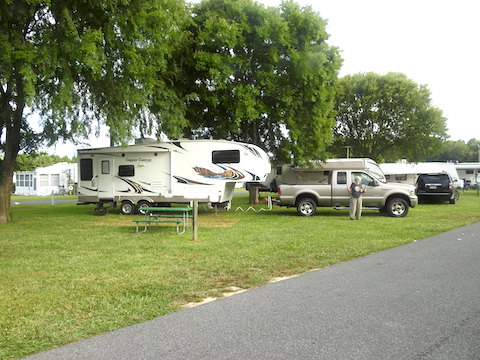
|
On our first full day, we visited the
Delaware Seashore State Park.
The park resides on a narrow strip of land between the Atlantic Ocean and two
bays, Rehobeth Bay and Indian River Bay. The bays are connected to the ocean by the
Indian River Inlet. Delaware Highway 1 bisects the park and
is carried over the inlet on a large bridge.
Whe we arrived, the tide was coming in. The first thing we noticed
were laughing gulls and terns
engaged in a feeding frenzy in the inlet under the bridge.
Then four dolphins swam out of the
inlet against the tide. I imagine they had been enjoying
a meal of whatever the gulls also were feeding on.
The park beach south of the inlet had life guards. The beach north of the inlet had none,
but that is where a number of surfers gathered to practice their sport. They waited
long times for a decent wave to appear, and even those were kind of small by Pacific
coast standards.
Later we walked the trail in the Burton Island Nature Preserve. The first thing that
astonished us were the large numbers of shells of horseshoe crabs along the shore.
Did the crabs die there or were these shells that were shed?
We heard a few birds in the trees, but did not see many. We did see a lot of fiddler crabs.
We also saw a diamondback terrapin burying her eggs in the middle of the trail.
I wonder if the young will avoid being trodden on when they hatch.
Two of the dolphins
|
Three dolphins
|
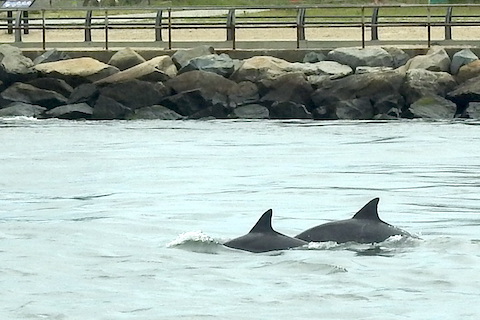
|
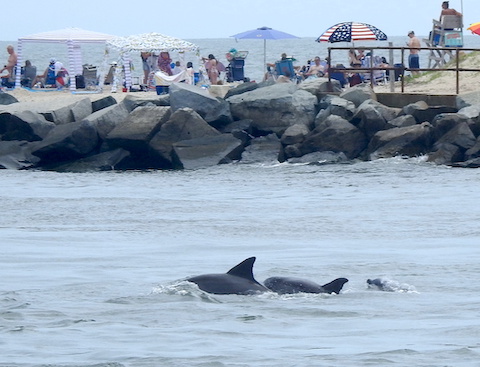
|
Here comes the wave!
|
Wipe out!
|
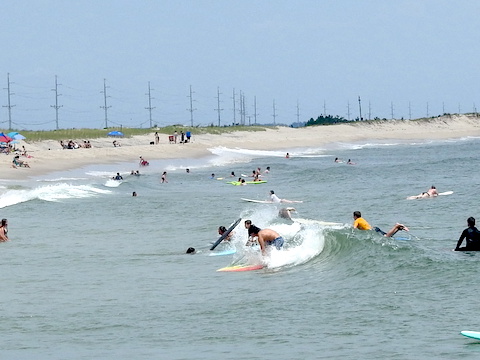
|
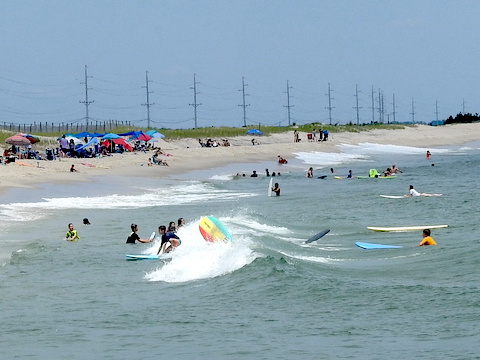
|
A horseshoe crab graveyard?
|
The egg-laying terrapin. Notice the barnacles clinging to her shell.
|
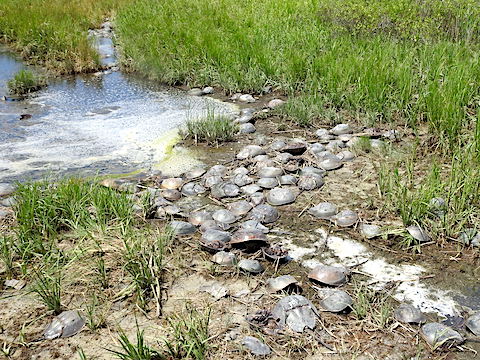
|
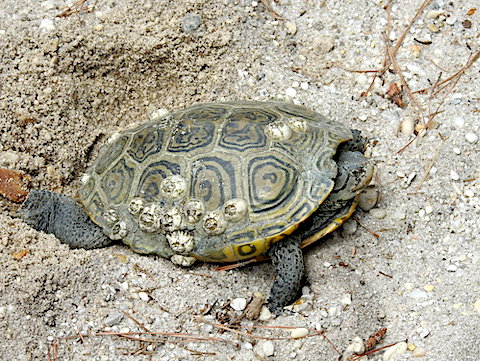
|
|
The next day, we revisited the
Prime Hook National Wildlife Refuge.
What is the difference between the wildlife refuge in April and it in July?
Insects! Multitudes of blood seeking insects! We found them, and they us,
along the Boardwalk Loop Trail. They were especially bad at the little family
cemetery where we'd been told that a Yellow-breasted Chat hangs out.
It wasn’t pretty, but we did escape. The bites stll itch half a week later,
Later we walked the dike trail into the middle of the ponds. There was much
less vegetation and more breeze that kept the insects in check.
From a viewing platform at the end of the dike,
we saw a variety of gulls, terns, and shorebirds, and great blue herons and osprey.
A big surprise to me was finding that there were two Black Skimmers among the
gulls and terns on the mud bank near the viewing platform.
These birds are relatives of the terns.
They have a long lower beak, which they stick in the water as they fly
just above the surface to catch small fish.
I did not make this video, but it shows how the Black Skimmers feed.
|
The pest control squad on their snazzy apartment building.
There weren’t enough of them to deal with all the mosquitoes and flies!

|
Osprey with a decent-sized fish for dinner,
seen from the Dike Trail
|
Black Skimmer on the mud flat
|
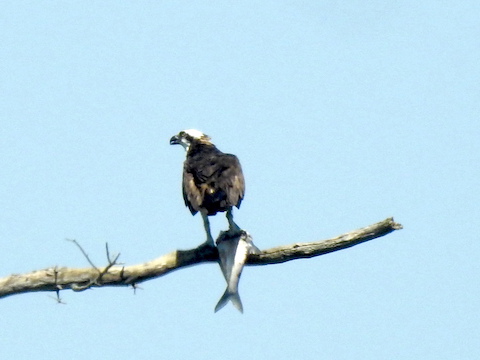
|

|
|
The Lewes Historical Society ( Lewes is pronounced the same as “Louis”)
gave a “Finding Their Voices” walking tour that we attended.
The tour visited local landmarks to highlight the importance of African
Americans, both free and slave, to the history of Lewes, especially in the
ship building, menhaden fishing, and navigation industries.
The docents appeared not to whitewash the history. For example, one told of
witnessing the harassment and abuse heaped upon a Black family that integrated
the “white” beach.
However, I was disappointed that neither of the docents and none of the six attendees
were Black.
Perhaps that is understandable because the Black population plummeted when
the town’s industry disappeared in the 1960s.
The most striking feature of the campus of the Lewes Historical Society is
a 19-foot high reel for winding Menhaden fishing nets. The nets, which were
a couple miles long, had
to be wound after being used.
The reel was powered by men walking on planks on the inside of the reel.
I wonder what would happen to a man who fell off the plank.
|
The Plank House, a 1690s slave dwelling
Imagine living here during the sultry, mid-Atlantic summers
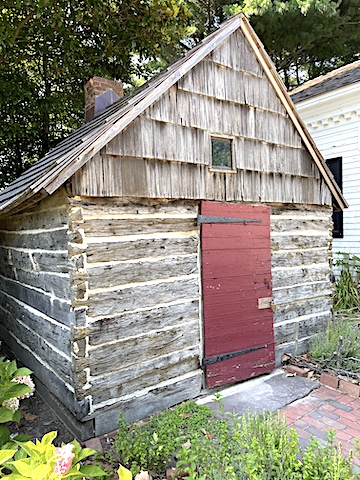
|
A Winding Reel for Menhaden fishing nets
|
Interior of Winding Reel, showing planks on which men walked
|
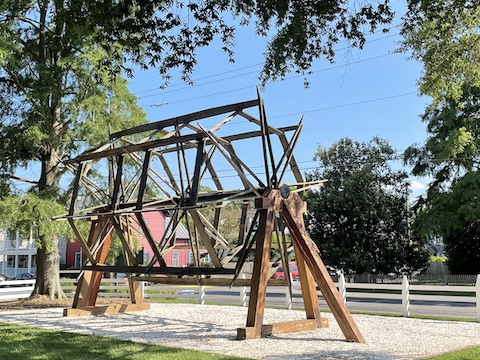
|
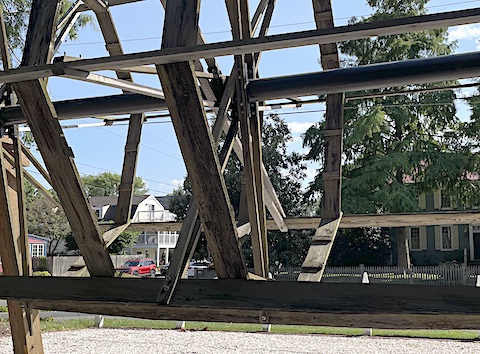
|
We also visited
Cape Henlopen State Park, again,
What is the difference between this state park in April and it in July?
People! Multitudes of people! We wanted to visit the park’s nature center,
but weren’t able to park there because all spaces were taken by people who
parked there to rent bicycles at the adjoining shop.
We drove on to the huge parking lot for the beach, an then walked back
to the nature center, avoiding being run over by the people on bicycles.
We especially enjoyed the aquariums in the nature center.
One was a touching pool that included horseshoe crabs.
The five other aquariums held a variety of coastal fish, including
puffer fish, flounders, skates, and others.
We walked the nature trail to the Delaware Bay, which was shallow a long way from shore.
We ate lunch back near the beach parking lot. There we saw an Indigo Bunting and a squirrel
that we thought might be one of the rare Delmarva squirrels, but it just turned out to be
one of the normal eastern fox squirrels. Too bad!
Cape May, New Jersey, and Lewes, Delaware, are important locations for
monitoring migrating birds during spring and fall. There is a
hawk monitoring platform in Cape Henlopen State Park.
We climbed there, but did not see any hawks. After all, this is not migration time.
We did see a small Eastern Fence Lizard. Consolation prize?
The Delaware Breakwater Lighthouse seen from the nature trail
|
A Common Wood Nymph Butterfly by the Nature Trail
|
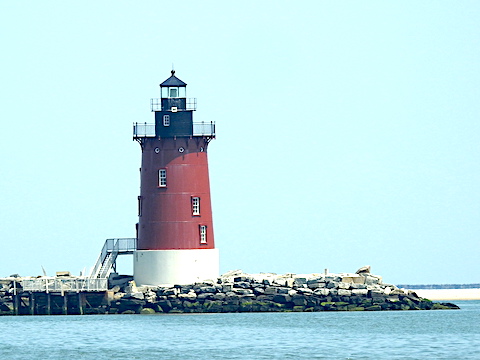
|
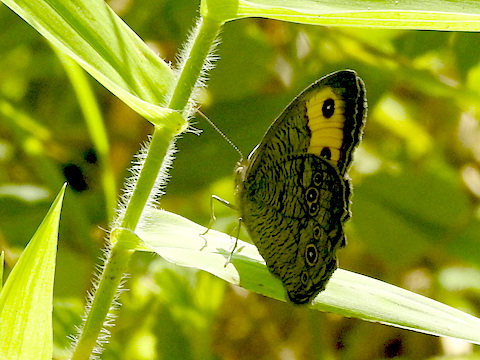
|
An Indigo Bunting near the panic pavilion
|
Eastern Fence Lizard at the hawk watching platform
|

|
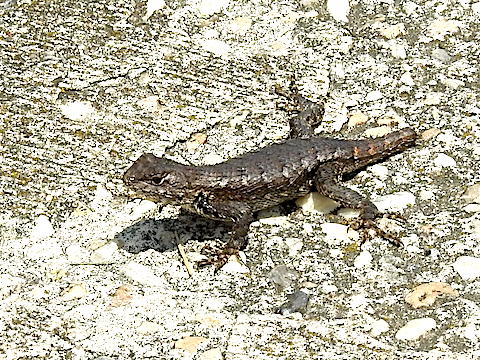
|
Atlantic coast dunes north of the hawk watch platform
|
Harbor Of Refuge Lighthouse seen at a long distance past hot dunes
|
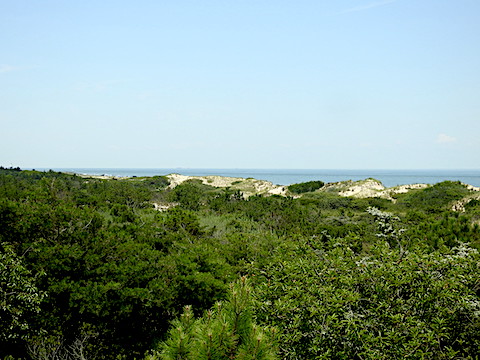
|
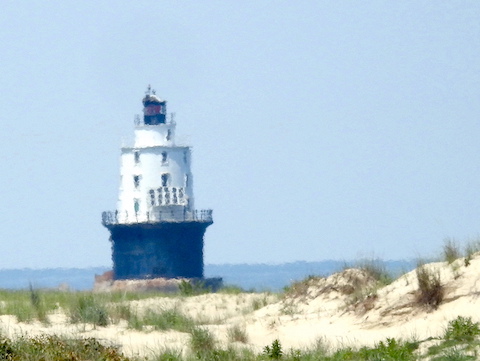
|
This vacation was short. It had to end, but we enjoyed ourselves.
Created by: Albert Holm, 16 July 2023; updated 12 August 2023


















